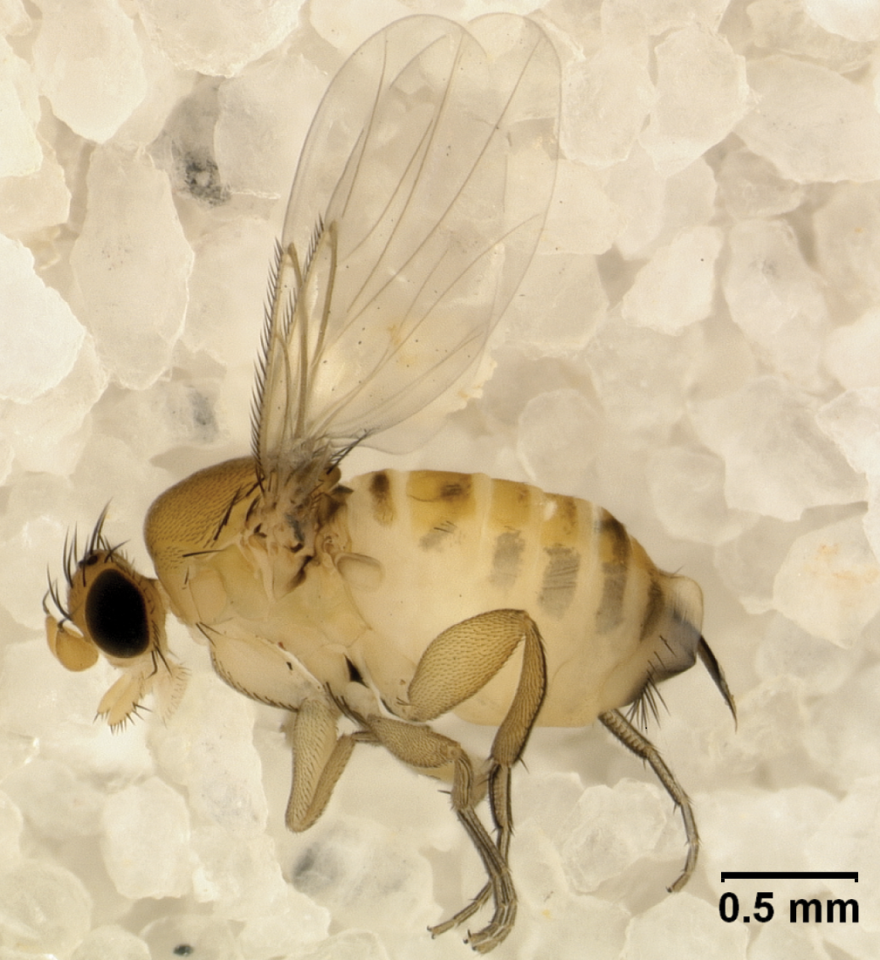It all began on the front porch of Claire Kimmel's house in Banner Elk, North Carolina. Kimmel has been a beekeeper in this Blue Ridge Mountain town for about six years. She keeps seven hives in her front yard.
One morning this past September, Kimmel's 6-year-old granddaughter was visiting for the day. The child was playing out on the front porch when she noticed something her grandparents had overlooked.
"Bean-daddy," she said to her grandfather, "why are there dead bees on the porch?"
Her grandparents looked down, and sure enough, to their horror, they saw a half dozen bees lying still on the ground.
But where was the killer? Kimmel had a hunch, but she had to be sure.
"After that, we started leaving the porch light on," she said, "and we'd come out in the morning and there would be - in addition to some dead bees - there would be one or two bees walking around erratically in a circle or a figure eight."
The bees appeared disoriented, or drunk, as if they were "not knowing where they were going - not able to stand up straight," Kimmel said.
She collected the bees and sent pictures to a biology professor named John Hafernik, who teaches at San Francisco State University. He saw them and confirmed. The killer, he said, was a small parasite called apocephalus borealis, known also as... the zombie fly.
Consumed From The Inside Out
Most cases of honeybees infected with the zombie fly have been contained to areas along the west coast, but in recent years, beekeepers have begun reporting kills in the east. Kimmel's report is the first to come from North Carolina.
Prof. Hafernik has been tracking the parasite and studying how it operates. A warning - the mechanics of how the fly engages, and later gorges on its host are not for the faint-of-heart beekeeper.
This is how it works: A female fly finds and lands on a worker honeybee. She then inserts eggs into the bee's stomach - Hafernik calls it the bee's "Achilles heel."
Once the eggs are safely inside, they hatch. Little fly maggots writhe and squirm inside the bee, and then, the feast begins.
"They begin eating on the inside of the bee," Hafernik says, "moving forward and through the narrow waist of the bee, up into the thorax, where the wing muscles are."
The fly maggots are, in essence, eating the bee alive from the inside out. And as all this is happening, the bee undergoes a strange behavioral change. It leaves the hive at night - highly unusual for a honeybee. If there's a light nearby, the bee is drawn to it. It flies around in disoriented fashion, eventually falling to the ground and walking around in circles.'
It's what Hafernik calls "zombie like behavior."
Ultimately, the infected bee keels over and dies. The maggots pop the head off its joint, and one by one, they crawl out of the bee's severed neck in search of their next host.
Mind Control vs. Altruistic Suicide
Researchers still aren't sure exactly what's causing the bee to exhibit those strange behaviors, for example flying out of its hive in the middle of the night. Could the parasite actually be controlling the bee's mind?
"Yeah, we've tried to interview the bees, but they don't tell us much," says Hafernik.
Jokes aside, his team has two hypotheses. The first does include mind control, in which the parasite is controlling the bee's behavior to get the bee to fly to a place that's good for the maggots to form into pupae once out of the infected bee.
The other possibility is altruistic suicide. In this theory, the bee is aware of its infection, and leaves the hive in the middle of the night when all the other bees are asleep to get the parasite as far away from the hive as possible. Even as the bee is being consumed on the inside, it's working for the good of the hive.
"It could be either of these two," Hafernik says, "and at this point, we don't know which it is."
If a beekeeper thinks a hive is infected, the bad news is there's no known cure. The best they can do is build a "light trap" that captures infected bees, which the beekeeper can later dispose of to prevent the parasite from spreading.
It's no guarantee, but, Hafernik says, it's better than nothing.
Detailed instructions are available on his website, which also has more resources for beekeepers and citizen scientists interested in tracking the parasite: www.zombeewatch.org.


